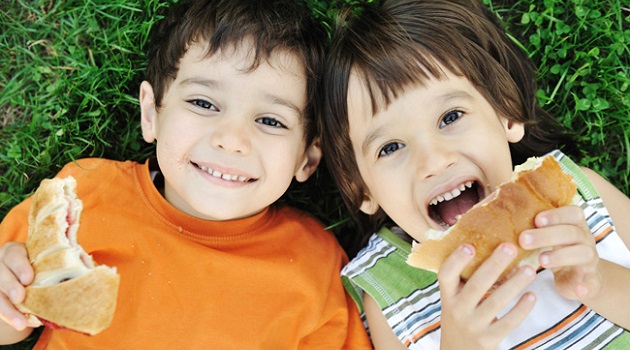Switching from vacation mode to a new school year calls for stocking up on healthy lunch and snack supplies. Meals and snacks should be nutritious and include: Grains, protein, vegetables, fruits, and optional low-fat or fat-free dairy.
According to Tracey Campbell, outpatient dietitian nutritionist for Prisma Health Children’s Hospital–Midlands, the important word when choosing bread products is ‘whole’ – not ‘wheat’ or ‘grain.’ Proteins can range from turkey or ham to low-fat cheeses, a boiled egg or even beans.
“Throw in some baby carrots, cherry tomatoes or celery with light ranch dressing, peanut butter or hummus for a healthy side. Never miss an opportunity to add veggies to sandwiches. Think lettuce, tomato and a pickle,” said Campbell.
Create your own lunch kits instead of buying prepackaged options.
“Often, the prepackaged versions are loaded with extra sodium, refined grains, added sugars and fat,” said Campbell. “Making your own doesn’t take much time, especially if you plan ahead. The more your kids are involved, the more likely they are to try new foods, which is great news if you have picky eaters.”
Children are more likely to eat healthy if their parents do.
“Get in the habit of packing your own healthy lunch at the same time you pack your child’s to model good eating patterns,” said Campbell. “Also, be sure to keep foods like yogurt, deli meats, mayonnaise and cheese cold with an ice pack.”
Hold the sweets.
“It may be tempting to add a cookie or brownie, but it’s best to avoid including sweets on a regular basis,” Campbell advised. Make sweets an occasional treat. “Fruit is a much better choice because it is naturally sweet, contains fiber and keeps us feeling satisfied longer.”
Campbell cautions fruit juices do not provide the same fiber as the whole fruit and can have as much sugar as a regular soda.
Campbell said snacks should be balanced by including a carbohydrate, and adding protein or fat. Parents can easily mix and match from the following list:
Carbohydrates
- Dried fruit
- Fruit canned in its own juices, no added sugar
- Fresh fruit
- Whole grain crackers
- Baked tortilla chips with salsa
- Low-fat popcorn
Protein/Fat
- Nuts
- Nut butters
- Sunflower or pumpkin seeds
- Boiled egg
- Avocado or guacamole
- Low-fat cheese
Some snacks have enough protein or fat that they can stand alone. Examples include:
- Low-fat or fat-free yogurt
- Granola bars with at least 6 grams of protein
- Peanut butter or cheese filled sandwich crackers
- Hummus paired with baby carrots, bell pepper strips, celery, cucumbers
Campbell encourages parents to get children involved with making healthy choices now, to set them up for success in school with nutritious and satisfying lunches and snacks.


